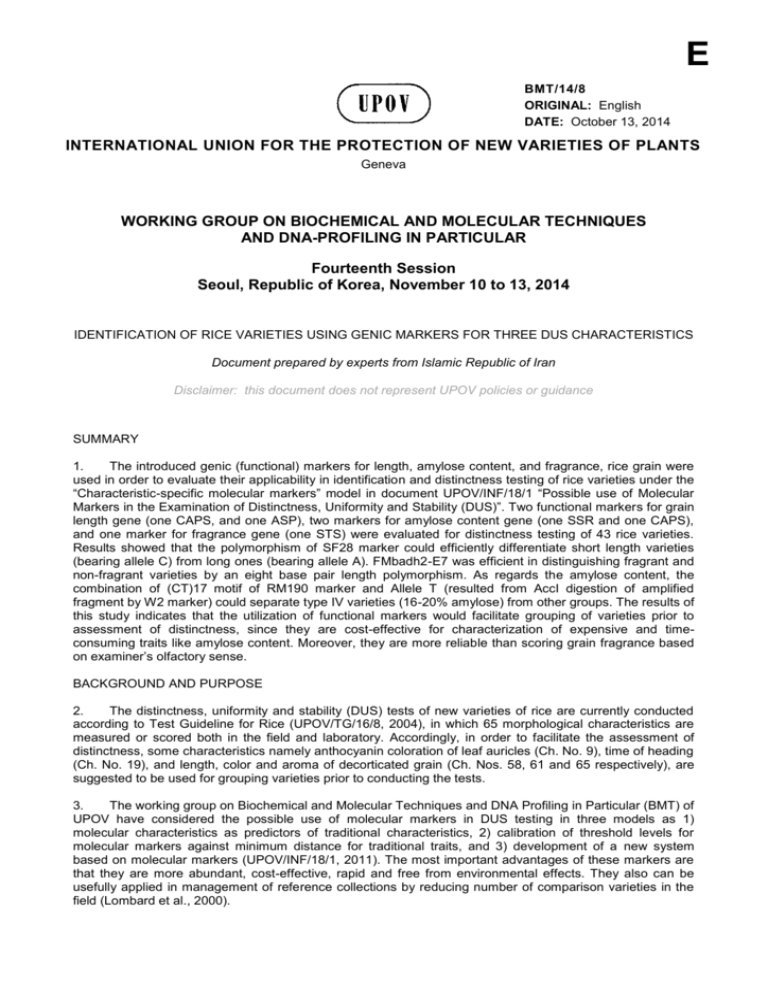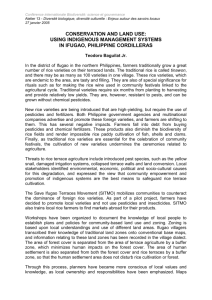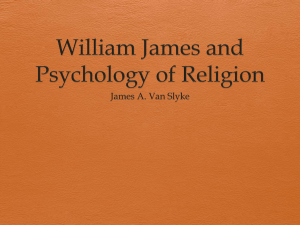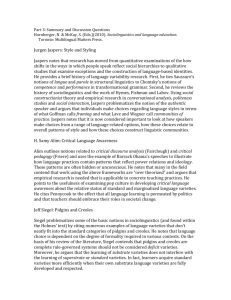Identification of Rice Varieties using Genic Markers for
advertisement

E BMT/14/8 ORIGINAL: English DATE: October 13, 2014 INTERNATIONAL UNION FOR THE PROTECTION OF NEW VARIETIES OF PLANTS Geneva WORKING GROUP ON BIOCHEMICAL AND MOLECULAR TECHNIQUES AND DNA-PROFILING IN PARTICULAR Fourteenth Session Seoul, Republic of Korea, November 10 to 13, 2014 IDENTIFICATION OF RICE VARIETIES USING GENIC MARKERS FOR THREE DUS CHARACTERISTICS Document prepared by experts from Islamic Republic of Iran Disclaimer: this document does not represent UPOV policies or guidance SUMMARY 1. The introduced genic (functional) markers for length, amylose content, and fragrance, rice grain were used in order to evaluate their applicability in identification and distinctness testing of rice varieties under the “Characteristic-specific molecular markers” model in document UPOV/INF/18/1 “Possible use of Molecular Markers in the Examination of Distinctness, Uniformity and Stability (DUS)”. Two functional markers for grain length gene (one CAPS, and one ASP), two markers for amylose content gene (one SSR and one CAPS), and one marker for fragrance gene (one STS) were evaluated for distinctness testing of 43 rice varieties. Results showed that the polymorphism of SF28 marker could efficiently differentiate short length varieties (bearing allele C) from long ones (bearing allele A). FMbadh2-E7 was efficient in distinguishing fragrant and non-fragrant varieties by an eight base pair length polymorphism. As regards the amylose content, the combination of (CT)17 motif of RM190 marker and Allele T (resulted from AccI digestion of amplified fragment by W2 marker) could separate type IV varieties (16-20% amylose) from other groups. The results of this study indicates that the utilization of functional markers would facilitate grouping of varieties prior to assessment of distinctness, since they are cost-effective for characterization of expensive and timeconsuming traits like amylose content. Moreover, they are more reliable than scoring grain fragrance based on examiner’s olfactory sense. BACKGROUND AND PURPOSE 2. The distinctness, uniformity and stability (DUS) tests of new varieties of rice are currently conducted according to Test Guideline for Rice (UPOV/TG/16/8, 2004), in which 65 morphological characteristics are measured or scored both in the field and laboratory. Accordingly, in order to facilitate the assessment of distinctness, some characteristics namely anthocyanin coloration of leaf auricles (Ch. No. 9), time of heading (Ch. No. 19), and length, color and aroma of decorticated grain (Ch. Nos. 58, 61 and 65 respectively), are suggested to be used for grouping varieties prior to conducting the tests. 3. The working group on Biochemical and Molecular Techniques and DNA Profiling in Particular (BMT) of UPOV have considered the possible use of molecular markers in DUS testing in three models as 1) molecular characteristics as predictors of traditional characteristics, 2) calibration of threshold levels for molecular markers against minimum distance for traditional traits, and 3) development of a new system based on molecular markers (UPOV/INF/18/1, 2011). The most important advantages of these markers are that they are more abundant, cost-effective, rapid and free from environmental effects. They also can be usefully applied in management of reference collections by reducing number of comparison varieties in the field (Lombard et al., 2000). BMT/14/8 page 2 4. So far, a number of neutral molecular markers have been used in identification and distinctness testing of rice varieties. These markers include RAPDs (Shukla et al., 2011; Patra and Chawla, 2010), ISSRs (Shukla et al., 2011), and SSRs or microsatellites (Singh et al., 2004; Sarao et al., 2009). However in a study by Bonow et al. (2009), SSRs derived from ESTs and MADS-box genes of rice were used in identification and DUS testing of rice varieties, which detected polymorphisms at relevant loci were suggested to be considered as expressed characters (Bonow et al., 2009). 5. In present study, genic (functional) markers of the genes responsible for grain length (characteristics Nos. 54 and 58 of Test Guidelines for Rice), amylose content (Characteristic no. 63), and fragrance (Characteristic no. 65) were used and their efficiency in variety identification were evaluated. Although these markers have been introduced to plant breeders to be used as a molecular tool in indirect selection of desired phenotypes of marker-assisted selection (MAS) programs, they also could be deployed by DUS examiners as well. In that respect, one SNP marker in the GS3 gene responsible for grain length of rice (Fan et al., 2008; Ramkumar et al., 2010), one linked SSR and one SNP in waxy gene of rice (Ayres et al., 1997) and one STS marker in fragrance gene (frg) of rice (Shi et al., 2008) were used for that purpose. MATERIALS AND METHODS Sample selection 6. A total of 43 rice varieties including 17 varieties bred by Rice Research Institute of Iran (RRII), 10 varieties bred by Sari University, four lines from International Rice Research Institute (IRRI), and 12 Iranian local varieties were used for marker validation in this study (Table 1, Annex). DNA extraction and PCR 7. Fresh leaves of 10 plants per variety were used for DNA extraction using a CTAB method (Saghaimaroof et al., 1984) with some modifications consisting substitution of mercaptoethanol (0.2%) with dithiothreitol (30 mM). The primer sequence of the all markers used in this study is provided in Table 1. The amplification (PCR) condition, electrophoresis and staining of the gels were all according to the mentioned methods in the relevant references. Genotyping with functional markers i) grain length 8. A 136 bp fragment of the second exon of the gene were amplified by a SF28 marker to characterize the varieties with the highly associated gene with rice grain length (GS3). Then the resulting amplicon was digested by PstI restriction enzyme to evaluate the CTGCAG/CTGAAG polymorphism at the cleavage site according to Fan et al. (2008). The A/C polymorphism was also validated in a single trial by the allele specific primer (ASP) provided by Ramkumar et al. (2010). ii) amylose content (AC) 9. A linked microsatellite (RM190) and a SNP marker (G/T) in the first intron of the gene was used to genotype the varieties with the waxy gene (Wx) that encodes granule-bound starch synthase (GBSS). The AGGTATA/AGTTATA polymorphism of this SNP resulted from a CAPS marker after cleavage by AccI restriction enzyme (Ayres et al., 1997). iii) fragrance 10. One STS marker (FMbadh2-E7) developed from an 8 bp fragment deletion in exon no.7 of the frg gene was used to characterize the varieties (Shi et al., 2008). This deletion in fragrant varieties produces a 260 bp band, while the non-fragrant varieties bear a complete (268 bp) copy. BMT/14/8 page 3 Phenotyping 11. The length of 20 both grain (Characteristic no. 54) and decorticated grain (Ch. No.58) was measured by a digital vernier caliper. Amylose content (Characteristic no. 63) of varieties were determined by Quality Laboratory of the Rice Research Institute of Iran, using spectrometry method (Juliano, 1971).The fragrance (Characteristic no. 65) of the varieties was determined by vaporizing the main component of the aroma in rice that is the 2-acetyl-1-pirroline (AcPy). In that respect, 10 ml. of a 1.7 % solution of KOH was added to two grams of decorticated grains and the resulting aroma was smelled to score the level of expression in varieties according to the Test Guidelines for Rice (UPOV/TG/16/8, 2004). Table 1. Markers used for characterizing the rice varieties Gene GS3 Marker Type SF28 CAPS, PstI EFP ERP IRSP IFLP ASP RM190 SSR W2-R CAPS, AccI FMbadh2E7 STS Wx frg Primer sequence (5’-3’) F-TGCCCATCTCCCTCGTTTAC R-GAAACAGCAGGCTGGCTTAC AGGCTAAACACATGCCCATCTC CCCAACGTTCAGAAATTAAATGTGCTG AACAGCAGGCTGGCTTACTCTCTG ACGCTGCCTCCAGATGCTGA F-CTTTGTCTATCTCAAGACAC R-TTGCAGATGTTCTTCCTGATG F-CTTTGTCTATCTCAAGACAC R- TTTCCAGCCCAACACCTTAC F: GGTTGCATTTACTGGGAGTT R: CAGTGAAACAGGCTGTCAAG Source Fan et al. (2008) Ramkumar et al. (2010) Ayres et al. (1997) Shi et al. (2008) Results and Discussion i) Grain length gene 12. Genotyping varieties by the SF28 marker resulted in grouping varieties into two distinct allelic group of A and C. Seven varieties (namely Line 2, Sazandegi, Hassani, Lenjan, Hassan-Saraie, Nogovaran, and IR65) showed the allele C and the remaining 36 varieties had the other allele (A). As expected the amplification of this SNP by the ASP marker of Ramkumar et al. (2010), provided similar results of SF28 marker. 13. The length of grain (Characteristic no. 54 of the Test Guideline for Rice) and decorticated grain (Ch. No.58) showed considerable variation between varieties with the average of 9.8 and 7 mm respectively. In that respect, 2 and 1.2 mm difference were observed between two allelic group of A and C in both two characteristics. An association analysis between the phenotype (grain length) and genotype (Allele A/C of SF28 marker) was undertaken using t-student test and the results showed that there was a significant difference (P = 0.0002) between two allelic group of C (Short grain) and A (long grain). The data also indicated a 0.6 mm overlap between two allelic groups in terms of decorticated grain length compared with a 1.8 mm overlap of grain length (Fig.1). Therefore, it is more appropriate to consider the association of the SNP locus with the decorticated grain length (Ch. No.58). The data confirms the results of the previously reported significant association between A/C mutation with grain length, in which a range of 6.4-8.8 mm in short length group (allele C) and 8.8-10.7 mm in other long grain group (allele A) were observed in 142 and 38 rice varieties respectively (Fan et al., 2008). Considering the quantitative states of expression for grain and decorticated length (UPOV/TG/16/8, 2004), the potential of SF28 genic marker is suggested for distinction of varieties and grouping them into only two classes of long and short groups. BMT/14/8 page 4 Table 2- Mean comparison for grain and decorticated grain length in two allelic group A and C Allele No. of Varieties Grain length (mm) C 7 8.1 a 6 A 36 10.1 b 7.2 b 2 0.8 1.2 0.56 difference LSD decorticated grain length (mm) a Max Min Diff. Max Min Diff. C 7 6.3 9.2 2.9 4.8 6.6 1.8 A 36 7.4 11.8 4.4 6 8.8 2.8 overlap 1.8 0.6 Means indicated by non-common letters have significant difference (P = 0.0002) by LSD test 14.0 10.0 9.0 12.0 7.0 10.0 6.0 8.0 Grain length (mm) decorticated grain length (mm) 8.0 5.0 4.0 3.0 2.0 1.0 0.0 6.0 4.0 2.0 0.0 0.5 A 1.5 C 0.5 A 1.5 C Fig 1. Range of decorticated grain length (left) and grain length (right) in two allelic groups A and C consisting 36 and 7 varieties respectively. ii) Amylose content (AC) 14. A total of four alleles were detected by amplification of RM190 microsatellite marker. The two varieties namely Khazar and Dorfak showed (CT)25 allele, nine varieties had (CT)20, 18 varieties bore (CT)17 and 14 varieties contained the lowest repetitive motif, (CT)3. Enzymatic digestion of W2 amplicon with AccI produced two alleles of T and G. Three varieties namely IR58025A, Jahesh, and Fajr had allele T, with the remaining 40 varieties that showed the other allele of G. Allelic combination of these two loci showed that all three varieties with allele T contained only the (CT)17 of RM190. On the contrary, the remaining varieties bearing the allele G had all different repetitive motifs of SSR marker. BMT/14/8 page 5 15. Amylose content (Characteristic no. 63) showed considerable variation between varieties with an average of 23.1 percent. The lowest and highest AC detected in varieties IR58025A and Pouya with 15.9 and 28.2 percent respectively. Association analysis was performed in 40 varieties out of 43, as there were not enough grain needed for measuring the AC in three varieties namely Nemat A, IR65, and Tarom-Molaee. The association was first done between marker with AC in separate tests and then carried out between the allelic combination of them (RM190+ W2) with AC. Mean comparison by t-student test between two allelic groups (T/G) of CAPS marker showed a significant difference between them (P<0.0001). Moreover, ANOVA between four allelic groups of RM190 (with means 21.4, 22.5, 23.2, and 25.3) detected a significant difference (p<0.0087). In that respect, ANOVA of five groups consisting allelic combination of two markers that was (CT)25+G, (CT)20+G, (CT)17+G, (CT)3+G, and (CT)17+T resulted in a significant difference (P=0.0002) between group means. 16. In present 43 varieties, two motifs i.e. (CT)17 and (CT)20 were detected out of previously reported seven alleles which their association with distinct levels of amylose was confirmed (Ayres et al., 1997). Two new alleles i.e. (CT)25 and (CT)3 with producing band sizes of 137 and 92 bp, respectively, were also detected which have not been reported elsewhere. The results of allelic combination of two markers (RM190 and W2) confirms the association of low amylose content (15%) with (CT)17 and allele T, though the present data shows a separate correlation of either of these alleles with 16.8% amylose (average of three means). This association could not be established with combination of two markers could not be established except with (CT)17 and T. However, the (CT)17 and (CT)3 alleles could show a significant difference between 21.6 and 25.4 percent levels of amylose (Table 3). Table 3. Mean comparison for amylose content in four allelic group of microsatellite marker, two allelic group of SNP marker, and five allelic combination group of these loci Allele/ Allelic combination No. of Varieties Amylose content (average) (CT)25 2 ab 22.5 (CT)20 9 ab 23.2 (CT)17 16 b 21.6 (CT)3 13 a 25.4 T 3 a 16.8 G 37 b 23.7 (CT)17 + T 3 b 16.8 (CT)25 + G 2 a 22.7 (CT)20 + G 9 a 23.2 (CT)17 + G 13 a 22.4 (CT)3 + G 13 a 25.4 P R2 (%) 0.0087 27 > 0.0001 35 0.0002 46 Means indicated by non-common letters have significant difference (P = 0.0002) by Duncan’s multiple range test 17. According to states of expression of amylose in the Test Guideline for Rice (UPOV/TG/16/8, 2004), there are seven groups for variety description. Among 40 varieties analyzed for amylose content, three varieties were placed in group IV (16-20%), 24 varieties in group V (20-25%) and 13 varieties in group VI (25-30%). Present data shows the efficiency of either combination of (CT)17 + T or T allele in distinction of group IV from other groups (Fig 2). BMT/14/8 page 6 30.0 VI Amylose Content (%) 25.0 V 20.0 IV 15.0 Amylose Class 10.0 0 5 10 15 20 25 30 (CT)n Fig 2- Amylose content, (CT)n allele of RM190, and Allele G/T of W2 marker (denoted by ○ and × respectively) in 40 rice varieties. Roman numbers indicate classes of amylose content according to DUS test guideline: IV (16-20%), V (20-25%), VI (2530%) iii) Fragrance 18. Amplification of FMbadh2-E7 marker in varieties separated them into two distinct groups. 25 varieties had a complete 268 bp fragment of the gene, while the other 18 varieties showed an 8 bp deletion in the amplified region. 19. 43 varieties were classified into three groups of non-fragrant or bearing very weak, weak, and strong aroma in decorticated grain (Characteristic no. 65 of the Test Guideline for Rice). All 23 fragrant varieties had the 268 allele of FMbadh2-E7 marker. Similarly, eight varieties with strong aroma produced a band of 260 bp. On the other hand, two varieties (Kadous and Danesh) out of 12 varieties with weak aroma had a 268 band, with the remaining 10 varieties that produced the other allele (260 bp). Although it was expected that all fragrant varieties show allele 260, there were just 18 varieties bearing this allele. As the difference between 18 and 20 individuals were not significant, a strong association (R 2=0.9) between observed and expected frequencies were observed (Table 4). Table 4. differentiation of rice varieties by FMbadh2-E7 in to two groups of non-fragrant and fragrant Fragrance group No. of Varieties FMbadh2-E7 Allele 268 Non-fragrant 23 23 Allele 260 --- Fragrant 20 2 18 BMT/14/8 page 7 CONCLUSION 20. Genic (functional) markers introduced for three characteristics i.e. grain length, amylose content, and fragrance were used for identification of 43 rice varieties. Two characteristics of these (grain length and fragrance) are recommended for grouping varieties prior to conducting DUS testing of rice varieties (UPOV/TG/16/8, 2004). The results of present study validate the usefulness and efficiency of these markers in grouping varieties and their identification. In this regard, rice varieties were grouped into to short and long groups by SF28 marker on GS3 gene of rice. Non-fragrant and fragrant varieties were distinguished by FMbadh2-E7 marker of frg gene. Moreover, RM190 and W2 markers could differentiate varieties belonging to group IV of amylose content (16-20%) from other classes. 21. These markers are cost-effective especially for measurement of amylose content in rice. Their efficiency is also highlighted when scoring fragrance relies on examiner’s olfactory sense. It is also better that the state of expression of grain length and fragrance be considered in two classes of short vs. long and non-fragrant vs. fragrant rather than three states as it completely matches to the genotypic profiles. Seyed Hossein Jamali, Leila Sadeghi, Ehsan Pourabed, Mohammad Reza Jazayeri, Samad Mobasser Plant Variety Identification & Registration Department of Seed & Plant Certification & Registration Institute (SPCRI), I.R.IRAN REFERENCES Ayres, N.M., McClung, A.M., Larkin, P.D., Bligh, H.F.J., Jones, C.A. and Park, W.D. 1997. Microsatellites and a single-nucleotide polymorphism differentiate apparent amylose classes in an extended pedigree of U S rice germplasm. Theoretical and Applied Genetics 94: 773–781. Bonow, S., E.V.R. Von Pinho, M.G.C. Vieira and B. Vosman. 2009. Microsatellite Markers in and around Rice Genes: Applications in Variety Identification and DUS Testing. Crop Sci. 49: 880-886. Fan, C., S. Yu, C. Wang, and Y. Xing. 2008. A causal C-A mutation in the second exon of GS3 highly associated with rice grain length and validated as a functional marker. TAG Theoretical and Applied Genetics 118:465-472. Lombard, V., C.P. Baril, P. Dubreuil, F. Blouet and D. Zhang. 2000. Genetic Relationships and Fingerprinting of Rapeseed Cultivars by AFLP: Consequences for Varietal Registration. Crop Sci 40: 1417-1425. Patra, N. and H.S. Chawla. 2010. Biochemical and RAPD molecular markers for establishing distinctiveness of basmati rice (Oryza sativa L.) varieties as additional descriptors for plant variety protection. Indian J. of Biotech. 9: 371-377. Ramkumar, G., A.K.P. Sivaranjani, M.K. Pandey, K. Sakthivel, N. Shobha Rani, I. Sudarshan, G.S.V. Prasad, C.N. Neeraja, R.M. Sundaram, and B.C. Viraktamath. 2010. Development of a PCR-based SNP marker system for effective selection of kernel length and kernel elongation in rice. Molecular Breeding:1-6. Saghai Maroof, M.A., K.M. Soliman, R.A. Jorgenson, and R.W. Allard. 1984. Ribosomal DNA spacer length polymorphism in barley: Mendelian inheritance, chromosomal location and population dynamics. Proc. Natl. Acad. Sci. USA. 81: 8014-8018. Sarao, N.K., Y. Vikal, K. Singh, M.A. Joshi and R.C. Sharma. 2009. SSR marker-based DNA fingerprinting and cultivar identification of rice (Oryza sativa L.) in Punjab state of India. Plant Genet. Res.: Characterization and Utilization 1: 3-3. Shi, W., Y. Yang, S. Chen, and M. Xu. 2008. Discovery of a new fragrance allele and the development of functional markers for the breeding of fragrant rice varieties. Molecular Breeding 22:185-192. Shukla, S.K., D.C. Joshi, R.K. Srivastava, M.I. Qureshi and Y.S. Singh. 2011. Suitability of RAPD and ISSR to complement agro-morphological DUS descriptors for establishing distinctiveness in indigenous local strains of Kalanamak rice (Oryza sativa). The Indian J. of Agr. Sci. 81 (11): 994-1000. Singh, R.K., R.K. Sharma, A.K. Singh, V.P. Singh, N.K. Singh, S.P. Tiwari, et al. 2004. Suitability of mapped sequence tagged microsatellite site markers for establishing distinctness, uniformity and stability in aromatic rice. Euphytica 135: 135-143. UPOV/TG/16/8. 2004. Test Guideline for Rice. UPOV/INF/18/1. 2011. Possible use of molecular markers in the examination of distinctness, uniformity and stability (DUS). BMT/14/8 ANNEX Table 1. Name of 43 varieties with the phenotypic and genotypic data of three characteristics used in this study Grain length No . 1 2 Varieties 4 5 6 7 8 Line 2 Hashemi Zayande Rud Ali Kazemi Kadous Sazandegi Saleh Sepid Rud 9 Parto 10 Jahesh 11 13 Neda Sange Tarom Sange Jo 14 Danesh 15 Gaem 2 16 17 Binam Hassani 18 Tarom Milad 19 21 22 23 24 25 Tabesh Tarom Jolodar Fajr Puya Nemat Khazar Deylamani 26 Gaem 3 27 28 Dorfak IR58025A 29 Gaem 1 30 31 32 Shirudi IR36 Lenjan Tarom Mahali 3 12 20 33 34 Neda A 35 36 37 38 Sahel Hasan Sarai Deylam IR42686R 39 Nemat A 40 RRII Local 8.4 10 Decorticate d grain length (mm) 6.6 7.2 Breeder Grain Length (mm) Amylose Content (AC) SF28 C A 22.1 28.2 AC (%) A/C Fragrance FMbadh2Fragranc E7 e 260/268 RM190 W2 (CT)n T/G 20 20 G G nf f 268 260 RRII 8.1 6.2 A 20.5 3 G nf 268 Local RRII RRII RRII RRII Sari Univ. Sari Univ. RRII 9.8 11 7.4 10.8 10.7 7.3 7.7 6 7.6 7.4 A A C A A 20.5 23.1 21 26.2 27.6 17 3 17 3 17 G G G G G f f f nf nf 260 268 260 268 268 9 6.5 A 21.1 17 G f 260 8.8 6.2 A 16.7 17 T f 260 10.2 7.6 A 25.4 3 G nf 268 Local 8.7 6.6 A 22.7 20 G f 260 Local Sari Univ. Sari Univ. Local Local Sari Univ. RRII Sari Univ. RRII RRII RRII RRII Local Sari Univ. RRII IRRI Sari Univ. RRII IRRI Local 9.3 6.4 A 21.4 20 G f 260 10.5 7.7 A 26.6 3 G f 268 9.8 6.5 A 26.3 3 G nf 268 9.7 9.2 7 6.6 A C 21.7 20.9 17 17 G G f nf 260 268 10.4 6.9 A 23.6 20 G f 268 11.8 8.8 A 27.9 3 G nf 268 10.5 6.5 A 23.9 20 G f 260 11 11 11.3 10.4 10.4 7.6 8.2 8 7.3 7 A A A A A 17.8 28.2 26.3 21.9 24.2 17 3 3 25 17 T G G G G f nf nf nf f 260 268 268 268 260 9.3 6.1 A 23.8 20 G nf 268 11.8 9.6 8.1 6.4 A A 23.1 15.9 25 17 G T f f 260 260 10.4 7 A 26.7 3 G nf 268 10.4 7.4 7.8 7.8 6.3 5.4 A A C 26.7 26 21.8 3 3 17 G G G nf nf f 268 268 260 9.6 7.2 A 21.1 20 G f 260 10.5 7.5 A 27.4 17 G nf 268 10.5 9.1 9.4 9.3 7.1 6.5 7 6.5 A C A A 19 21.7 22 22.8 3 20 17 17 G G G G nf nf nf nf 268 268 268 268 11 8 A NA 3 G nf 268 Local Sari Univ. RRII Local RRII IRRI Sari Univ. RRII Shafagh 10.5 7.5 A 22.7 17 G f 260 Tarom Local 9.7 7.4 A NA 17 G f 260 Molaee 42 IR65 IRRI 6.3 4.8 C NA 17 G nf 268 43 Nogavaran Local 8.5 6.1 C 20.7 17 G f 260 Min 6.3 4.8 Max 11.8 8.8 Average 9.8 7 Abbreviations: RRII: Rice Research Institute of Iran, IRRI: International Rice Research Institute, nf: non-fragrant, n:frafrant, NA: not assigned 41 [End of annex and of document]






